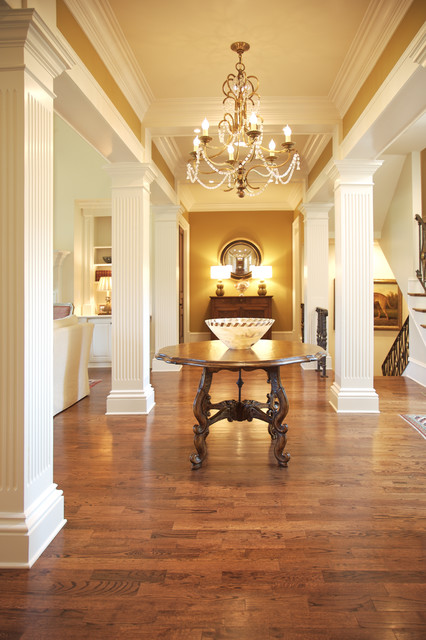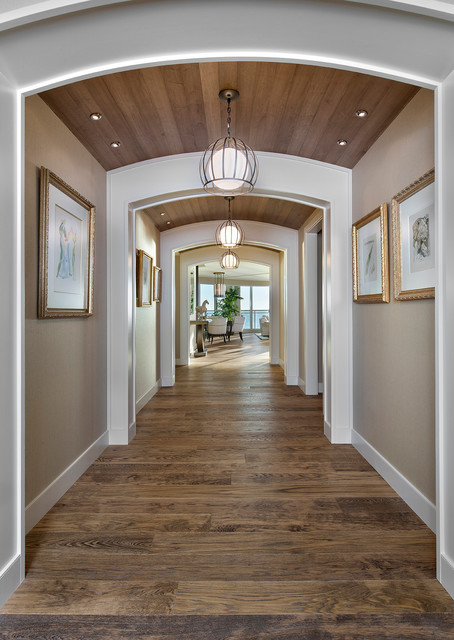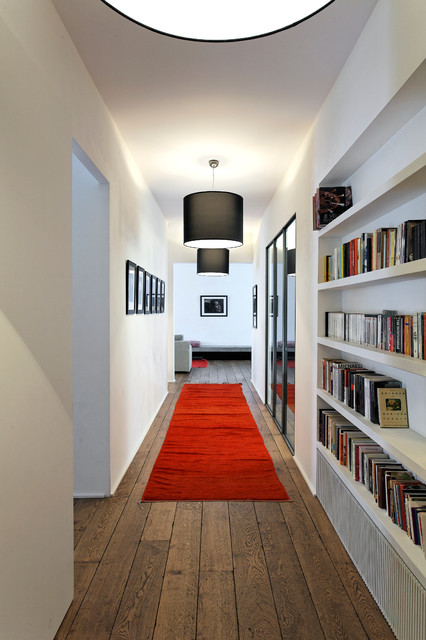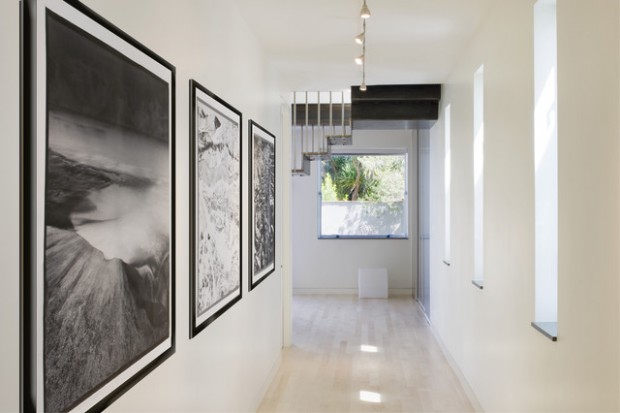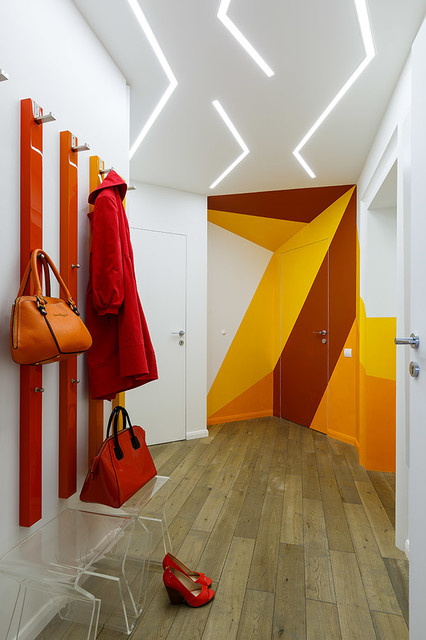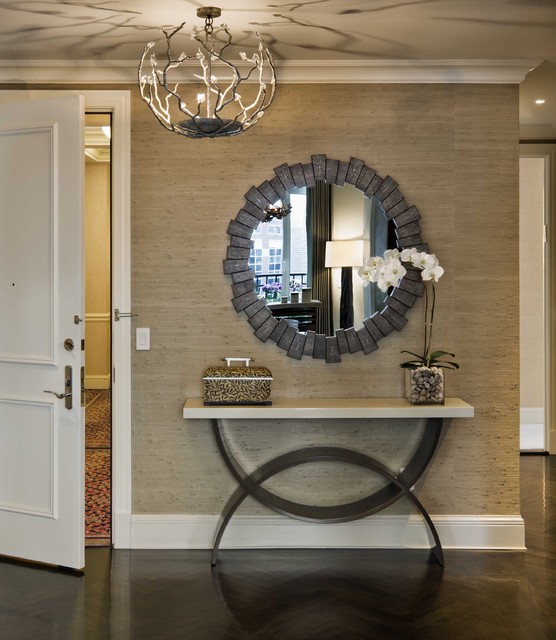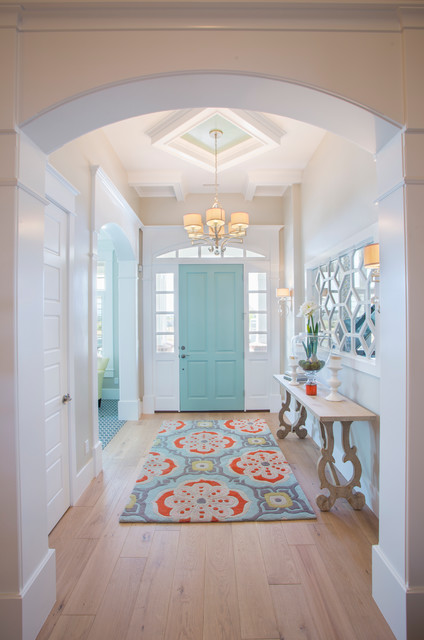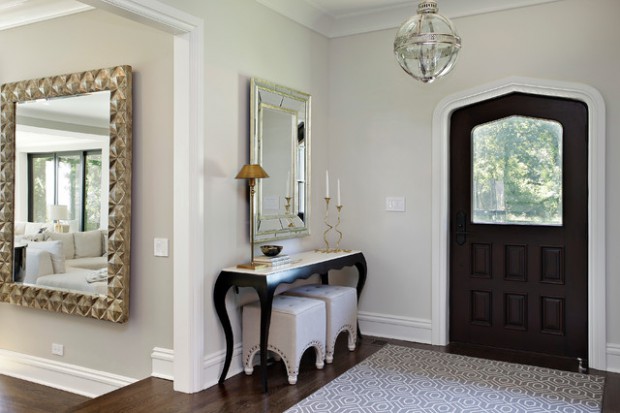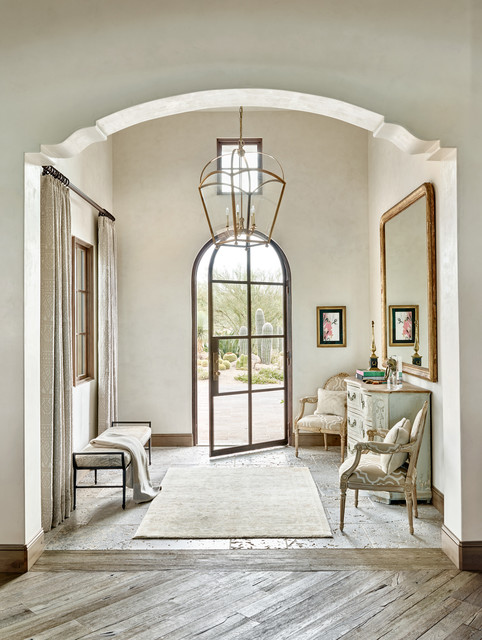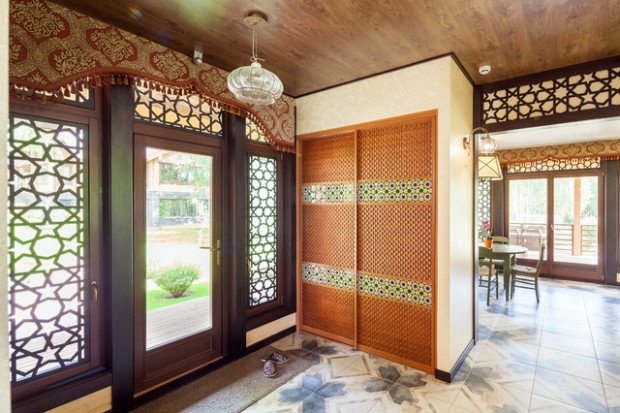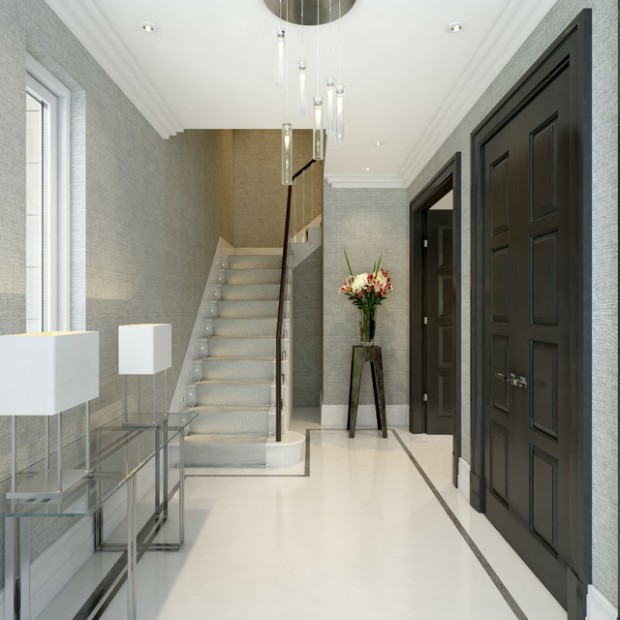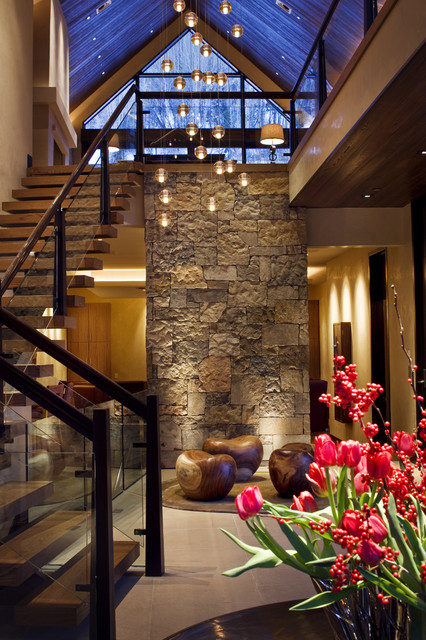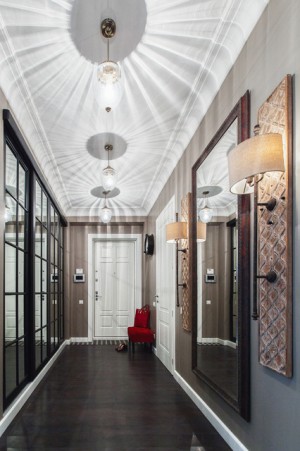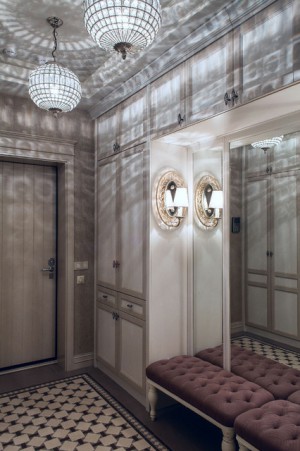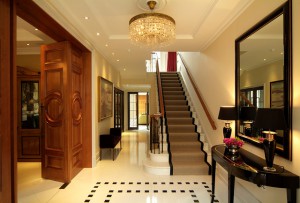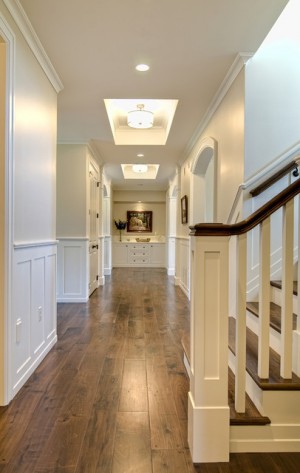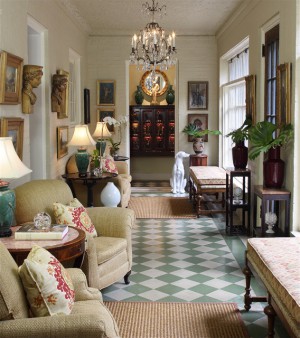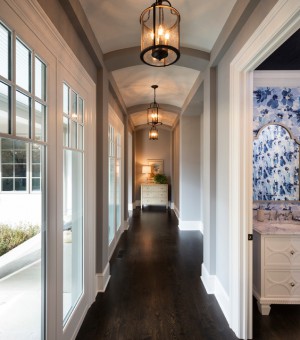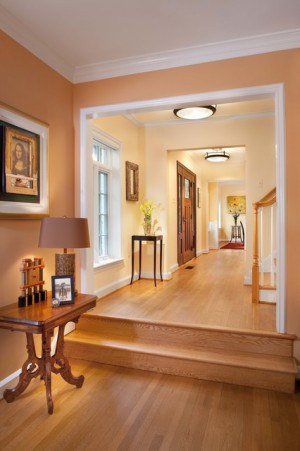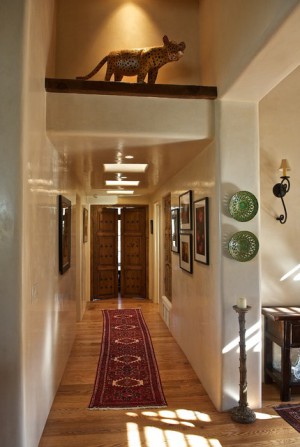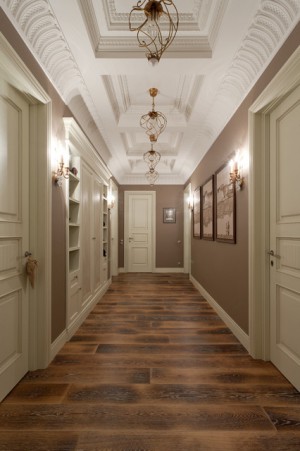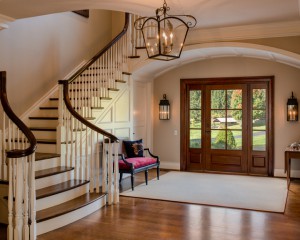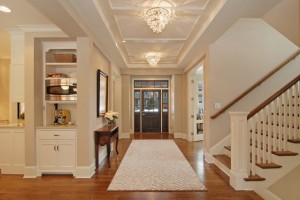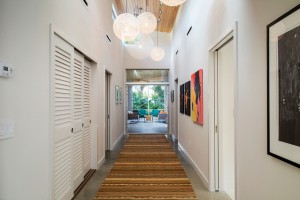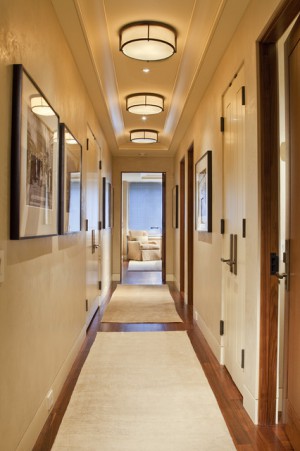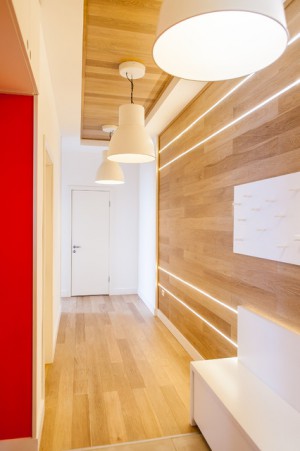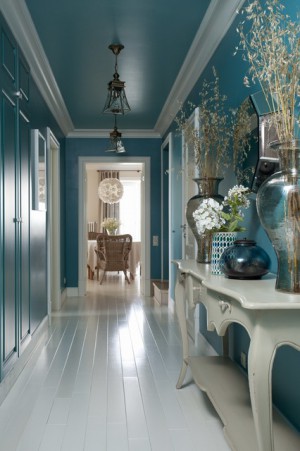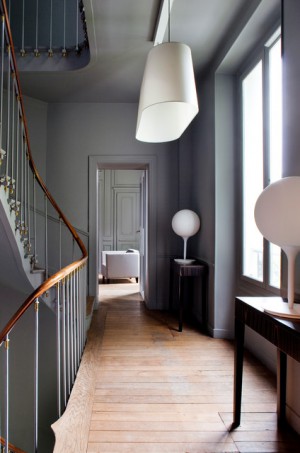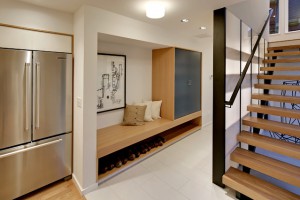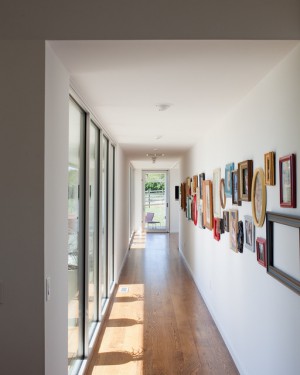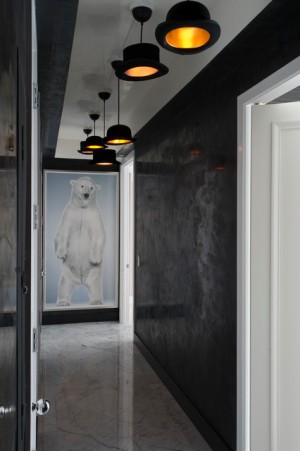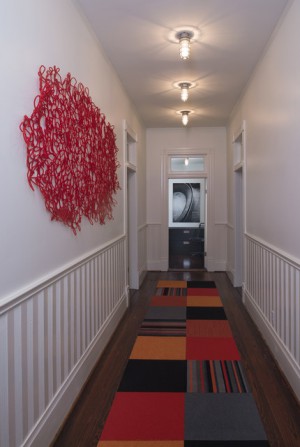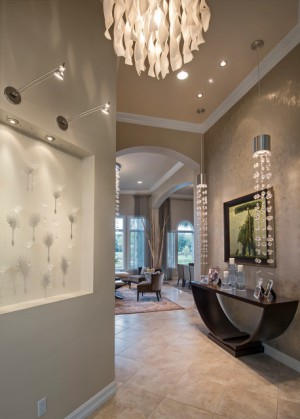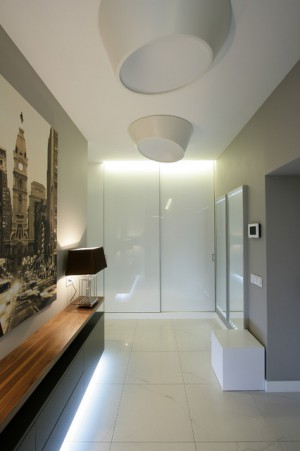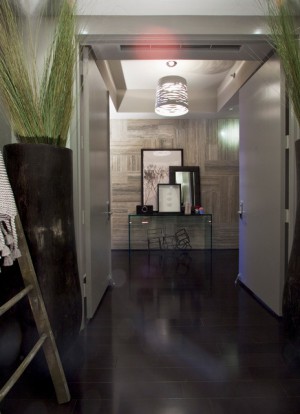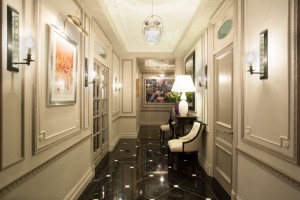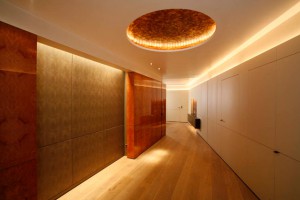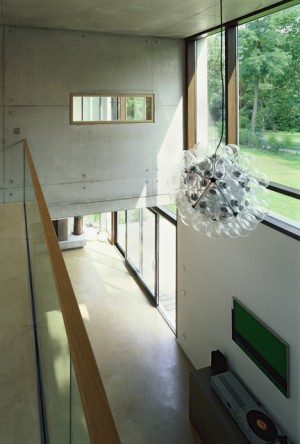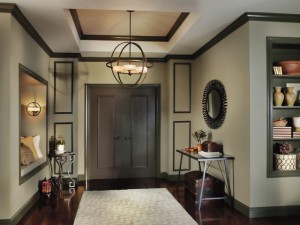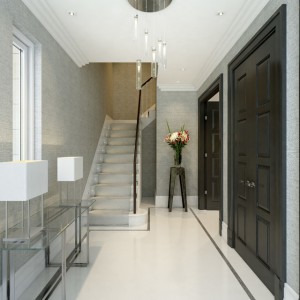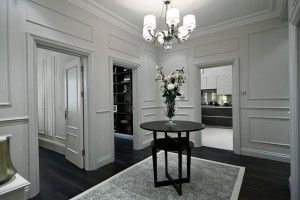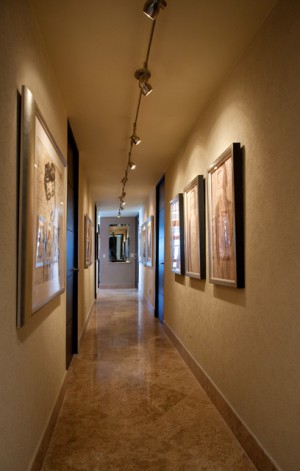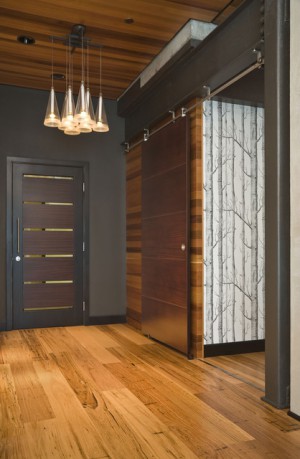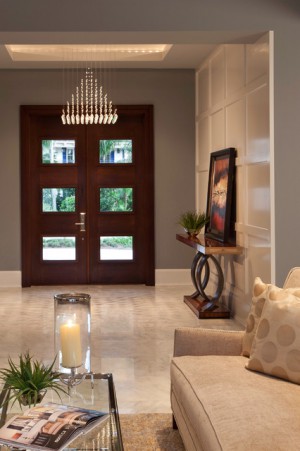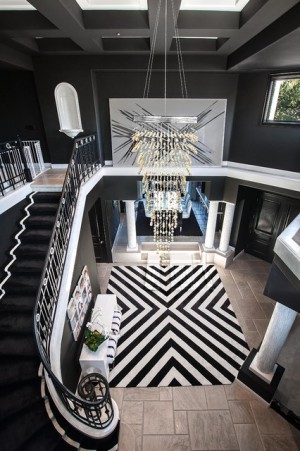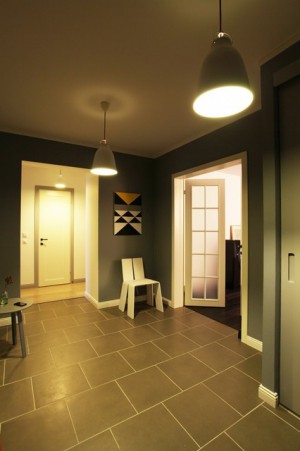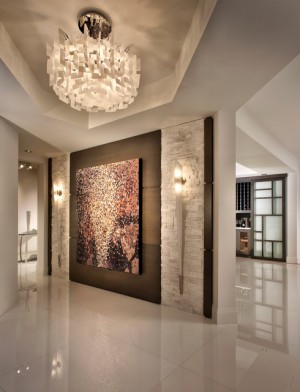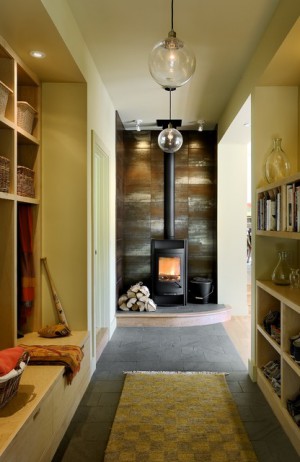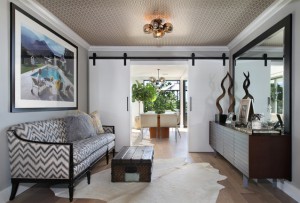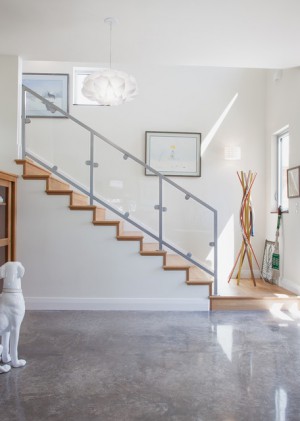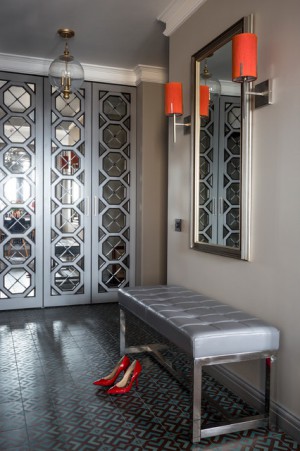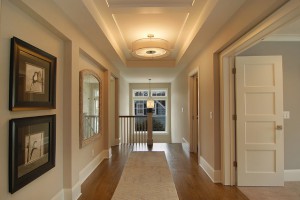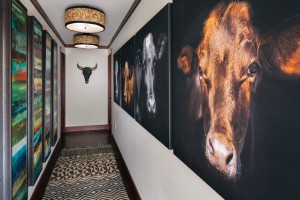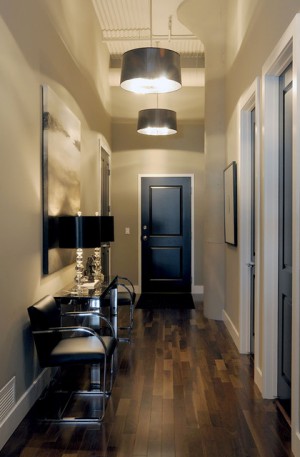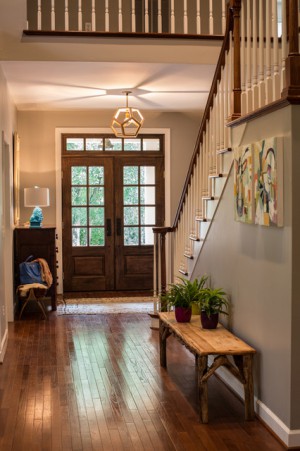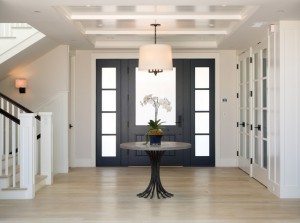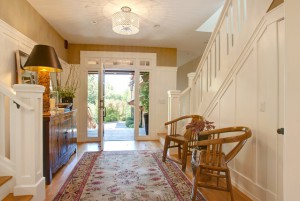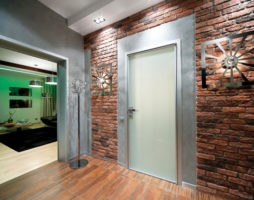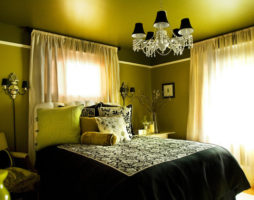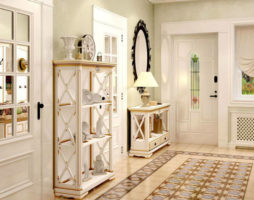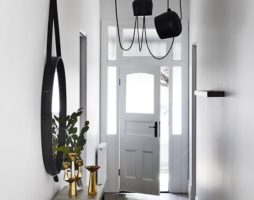It would seem, well, what difficulties can arise in the design of such a room as a corridor? The usual flat space, without any frills and planning twists and turns. However, therein lies the problem. After all, you really want everything here to look no less stylish than, say, in the hall. A large spacious corridor can generally be re-profiled, and made from a technical room into a very residential one. The only thing that stops many owners in this is poor-quality corridor lighting. Yes, indeed, it is almost impossible to solve the issue with natural light, but it’s very worth working on artificial lighting. High-quality lamps with a good location can completely change the perception of the corridor space, filling it with a special charm and even romanticism.
Types of corridor lighting
You can illuminate the corridor in different ways. Experts identify a general and local type of organization of the lighting scheme. Luminaires for each of them are selected in accordance with the volume of the room and its layout. Corridors can be wide and narrow, elongated and square. Properly lit areas always look attractive, because they mask all the imperfections. But let's get back to the types of lighting in the corridor and try to figure out which lighting fixtures are designed for what.
Local lighting is created by:
- Bra.
- Floor lamp.
- Clothespin lamps and other directional light fixtures, the task of which is to draw attention to certain interior elements.
The main lighting is the prerogative:
- Chandelier
- Spotov.
Additional lighting is organized using:
- Built-in lamps.
- Spot lighting elements.
- LED strips.
The lamps responsible for the main part of the lighting in the corridor should not be bulky and ornate. Instead of chandeliers on legs and chains, it is better to install the so-called ceiling tablets, which are fixed directly to the ceiling surface and do not “steal” the spatial volumes of an already sometimes cramped room.
back to index ↑Corridor lighting: highlights
The windows in the corridor are the exception rather than the rule, so the space is illuminated around the clock exclusively with lamps. They should emit light of such intensity and spectrum that there are no dark corners in the room. In this case, there should not be a sharp difference between the level of illumination of adjacent rooms and the corridor. This can cause negative emotions.
Ceiling lights in the hallway should not flood the space with harsh light, however, as well as barely warm, too, so before you buy them, look, what power are they rated for?. You need to find designs in which the lamps used will give a soft light, and the lampshade will successfully scatter it.
The easiest way to get this effect is from the use of frosted lamps, chandelier models with tinted lampshades or products whose shades direct light fluxes to the ceiling, and not radically down.
In large corridors where there is a need to install several ceiling lamps at once, you can look for unexpected solutions in their placement or use them in combination. The interior will look original, in which the ceiling lights in the corridor are hidden behind a suspended translucent ceiling structure. If the room is low and it is not possible to organize a false ceiling in it, you can simply put an ordinary cornice around the perimeter of the corridor and mount the backlight behind it. This will be a wonderful addition to the existing ceiling lamps.
Now let's look at how lighting is organized in the corridors of different layouts. In narrow and long rooms, the lamps are positioned in such a way that the light coming from them is reflected from the ceiling and walls. This technique helps to correct the space at the visual level. The corridor immediately seems wider and more voluminous.
With high ceilings, it is better to use spots rather than chandeliers, because they allow you to adjust the direction of the flow of light rays, which is very important for rooms that resemble tunnels. The lighting in the well-shaped corridor should be organized so that the ceiling remains in the shade and does not focus on itself. This can only be done by directing the light on the walls.
Localization of corridor lighting
“In order to save money, you can install motion sensors, then hallway lighting will only turn on in the presence of a person
In the decor of any corridor, there is certainly a mirror. It is possible that there will be a dressing room in the room. Naturally, such places need additional lighting, therefore, when planning the location of lamps in the corridor, they need to be given special attention. A good place to place the lamp will be the upper border of the mirror frame. A large mirror is best illuminated by a pair of symmetrically placed lamps. If the mirror is planned to be used exclusively for decorative purposes, then an LED strip is more suitable for its illumination.
What is also important in this matter is the organization of lighting control. These can be standard switches or something more modern, like dimmers and other electronic "things". In order to save money, you can install motion sensors, then the lighting in the corridor will turn on only in the presence of a person. This approach will allow you to save a lot on electricity.
Design ideas for organizing lighting
If you are at least a little versed in electrical installation and are familiar with the basics of design, then you can try to design your corridor lighting yourself. When placing sconces, floor lamps and other elements, do not forget that:
- The light, under no circumstances, should not hurt the eyes with its brightness, however, twilight should not appear when it is turned on. An insufficiently lit corridor will appear visually smaller.
- By installing several lamps on the side walls in the corridor so that the light streams coming from them intersect, refract and be absorbed by opposite surfaces, you can make even the narrowest room visually wider. If you already have several ceiling lights in your corridor, and changing them is not included in your plans, then turn their shades so that the light does not fall on the floor, but pours on the walls as much as possible.
- A high ceiling can be "lowered" without resorting to global reconstructions using expensive materials. Here, properly selected lamps with adjustable radiation directivity will again come to the rescue. It doesn't matter where you attach them, as long as they shine in the right direction, namely on the bottom of the walls. Since the ceiling will be lost in the darkness, the room will become much more proportional and cozier.
- Again, lighting in the corridor will help to get a mysterious and mysterious interior. Streams of light from built-in or hidden lamps will “pull out” the necessary objects from the environment, thereby creating a certain mood. The same technique can hide the flaws of the decor. The play of light is able to smooth out all the existing bumps and unattractive roughness.
- The latest design achievement was the use of LED lights in the hallway. With their help, it is easy to adjust the degree of illumination of the space and its color spectrum, picking it up in accordance with the time of day or adjusting it to suit your mood.
- Thoughtful lighting can "raise" a low ceiling. To do this, it is enough to saddle its surface with a mirror or glossy one and illuminate it with a backlight built into the floor or wall plinth.
Design errors
"Choosing a way hallway lighting, you need to give preference to schemes that can correct the visual perception of space, and not to focus on the brightness of the spilling light "
Sometimes, a seemingly great lighting idea turns out to be a complete utopia. What is good for volumetric spaces, in a limited area of \u200b\u200bthe corridor will be perceived, to put it mildly, inadequately. The craving for the use of chandeliers must be nipped in the bud. The organization of the same type of bright lighting in a room of similar functionality will place not quite the right accents and will attract excessive and unnecessary attention to it, exposing the existing decorative or breading flaws. You can correct the situation with a combination of different types of lighting.
When choosing a lighting method in the corridor, you need to give preference to schemes that can correct the visual perception of space, and not focus on the brightness of the spilling light. If you plan to install suspended ceiling structures, then integrate medium-sized spotlights into them. This will be a good design move, as it will fill the corridor with comfort. If necessary, highlight some accent areas, resort to the help of spots.
Auxiliary recommendations
The corridor should not be depressing and cause a desire to run through it, cowering, without looking back. To get into this room, you experienced only positive emotions, try to follow the following recommendations.
- The number of lamps in the corridor should be such that the light emitted by them is as bright as in adjacent rooms. If the corridor borders on the bedroom, the light in which is muted, then soft lighting should be organized in it.
– General lighting must certainly be supplemented by local lighting. Typically, ceiling lamps are complemented by sconces and built-in lighting.
- In a long corridor, it makes sense to divide the space into light zones. In this case, it will be perceived comfortably and will no longer seem like a “pipe”. The color and power of light emission in each zone will be excellent. To achieve a similar effect will allow hidden lighting in the ceiling, made by spotlights or directional light lamps.
- If the corridor is spacious and there are a lot of doors and cabinets in it, it is worth creating an accent light zone. The object of intense lighting in the corridor can be, for example, a niche or a shelf. In these places it is necessary to organize mini-expositions, for example, from interesting photographs, dummies of weapons, unusual masks, original dishes. All this wealth is illuminated by directed streams emanating, for example, from spots. The rest of the area is illuminated by lighting. It can be built-in lights and LED strips.
- It makes sense to hang a chandelier in high corridors. She will "lower" the ceiling, making the ceiling closer. With a long corridor, it would be more correct to illuminate it with several single-arm chandeliers.
- Low ceilings make the room closed, giving rise to an oppressive atmosphere in it. Proper lighting of the corridor will dispel these illusions. Pick up a set of small wall sconces with shades looking at the ceiling, and the light coming from them will solve the problems of spatial perception.
Important installation points
When carrying out electrical work, lay the wires with a margin. That is, make a few additional lines, put backup ends in a single switch. This is useful if you wish to further increase the number of devices and improve the quality of lighting in the room.
Plan ahead for how much you need sockets and switches, what type they should be and where exactly they should be located. Lamps in a long corridor should be switched on from both ends of the room. This will make them more comfortable to use.
Switches can be standard: keyboard or push-button, but in modern interiors it is better to replace them with motion sensors.
The number of shadows from the lamps in the corridor will become less if they are placed randomly or in a cascade, and not in one straight line.
Do not neglect the norms of illumination of the corridor. Sanitary rules are not invented from a flashlight, but are designed specifically to ensure that your health is safe.
If a mini living space is formed in the corridor, then you can create a comfortable atmosphere in the working areas using automatic control, like an office one. Such systems are programmable and make it easy to change the intensity of lighting in the right areas of the room, turn on and off selected lamps in the corridor, and do much more. Thanks to this functionality, the system was given the definition - "Smart Light".
Conclusion
A properly designed lighting scheme will be ineffective if lamps and lamps of the wrong class are purchased in the corridor. In the design of this room, there is absolutely no place for daylight devices equipped with fluorescent lamps. Their light distorts the color reproduction, and hence the perception of space. Makeup applied under such lighting or a drawing made in normal light will look tasteless. Ideally, corridor lighting is carried out with halogen lamps. An alternative to them, albeit not the most economical, are conventional incandescent lamps.
back to index ↑Photo gallery: corridor lighting:
https://youtu.be/HVArS0f9BnA
